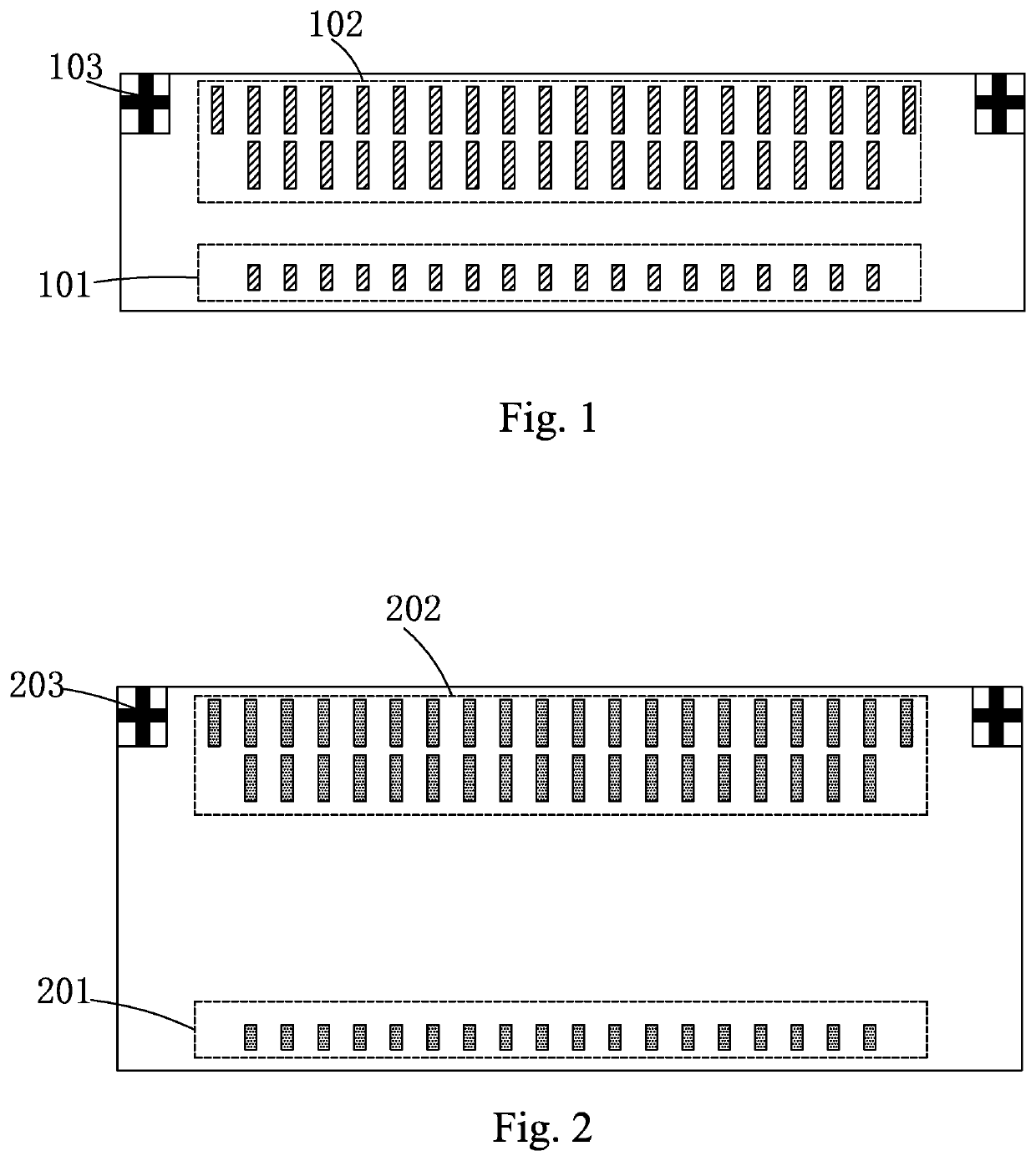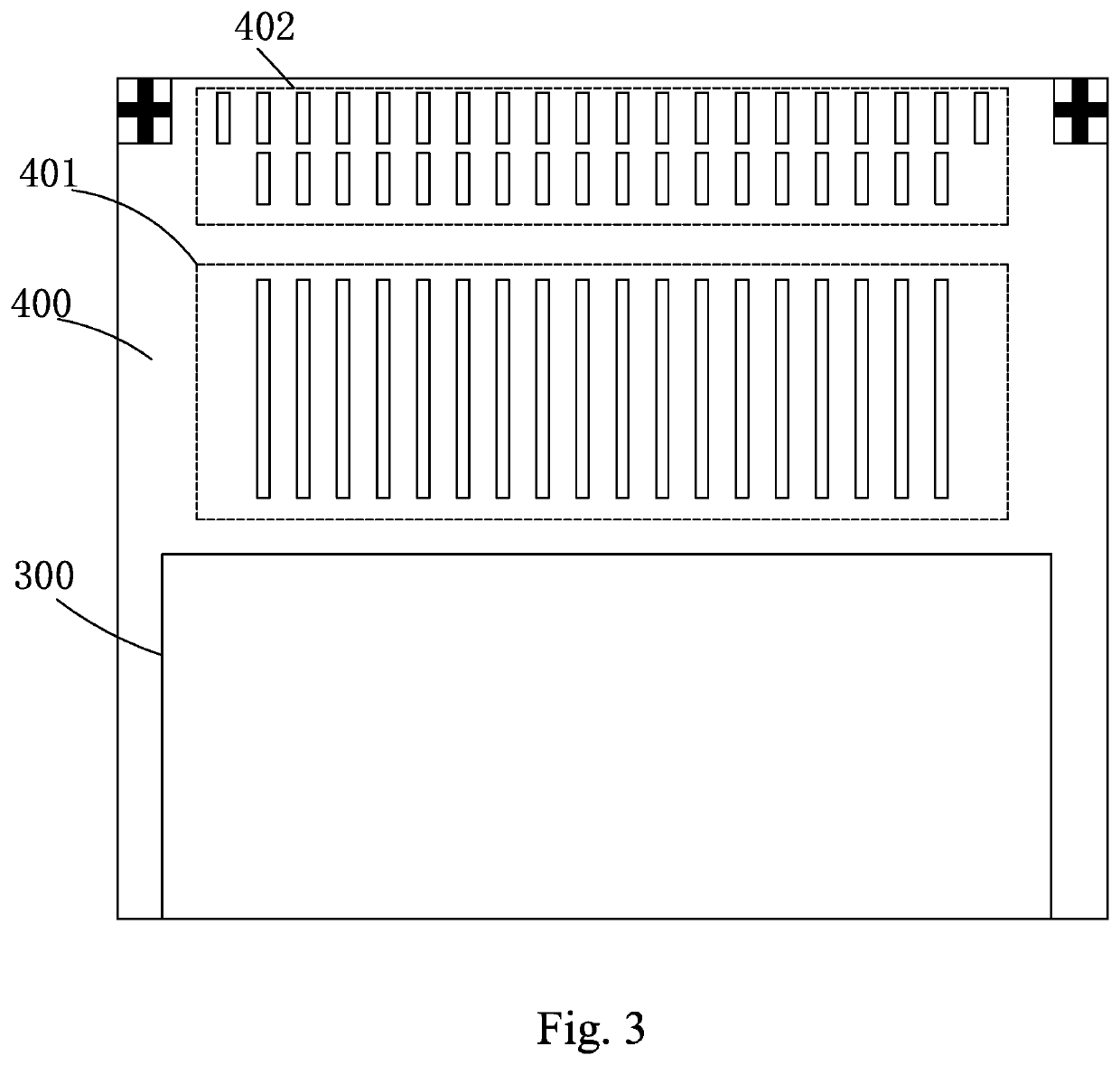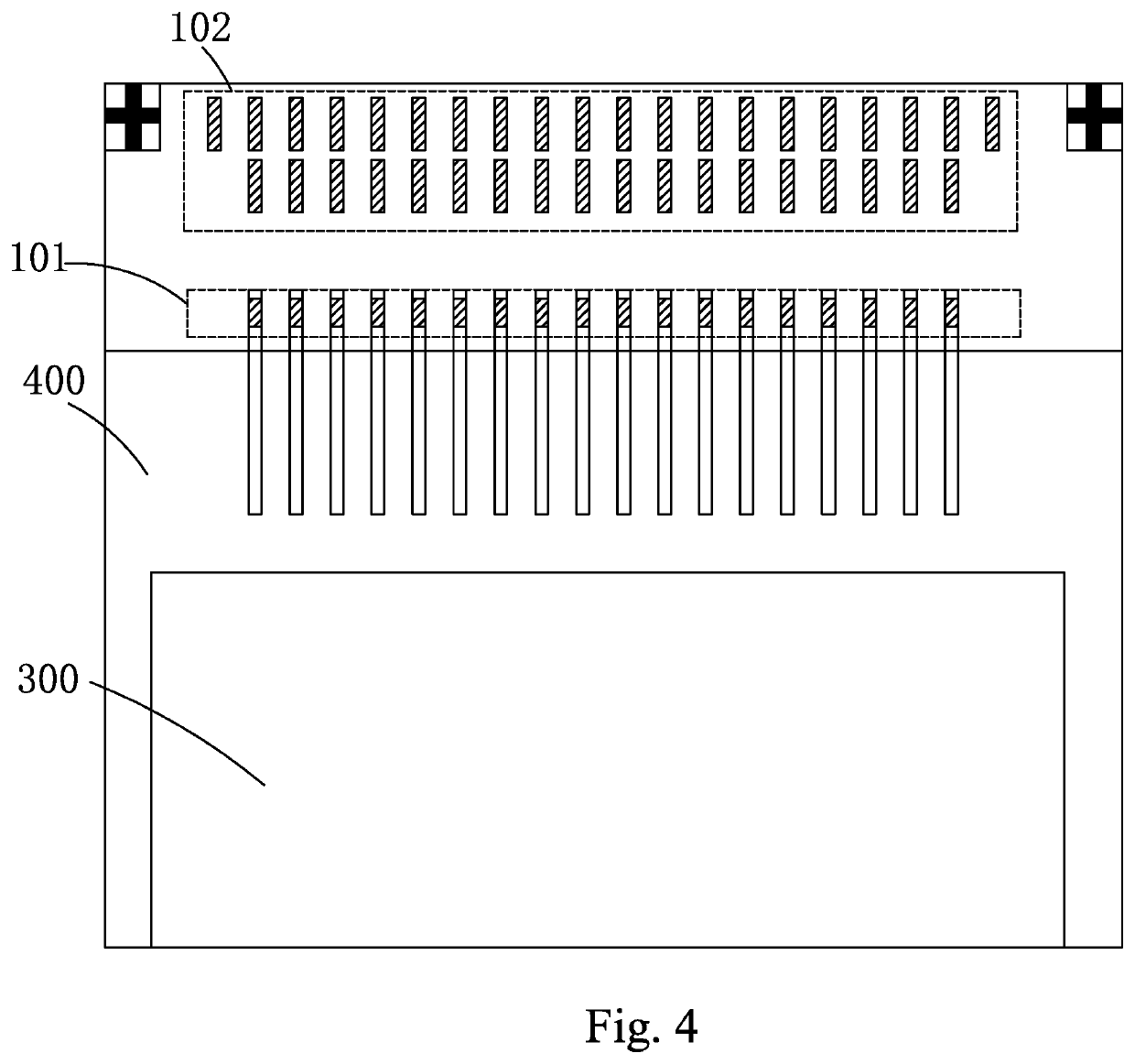Array substrate and chip bonding method
a chip bonding and array substrate technology, applied in the field of display, can solve the problems contrast difference, glass mura (cog mura), etc., and achieve the effect of reducing the distance between the chip on the second output terminal group and the edge of the array substrate, ensuring display quality, and reducing the probability of poor chip bonding
- Summary
- Abstract
- Description
- Claims
- Application Information
AI Technical Summary
Benefits of technology
Problems solved by technology
Method used
Image
Examples
Embodiment Construction
[0035]To further explain the technical means and effect of the present invention, the following refers to embodiments and drawings for detailed description.
[0036]Refer to FIG. 6. The present invention provides an array substrate, comprising: an active area 10, a bonding area 20 located around the active area 10, wherein the bonding area 20 being provided with an input terminal group 21, a first output terminal group 22 and a second output terminal group 23;
[0037]the first output terminal group 22 being located at a side of the input terminal group 21 away from the active area 10, and the second output terminal group 23 being located between the first output terminal group 22 and the input terminal group 21; in other words, the first output terminal group 22, the second output terminal group 23 and the input terminal group 21 are sequentially disposed from top to bottom, and the distance to the edge of the array substrate is also gradually increasing.
[0038]When bonding chips, the fir...
PUM
| Property | Measurement | Unit |
|---|---|---|
| bonding area | aaaaa | aaaaa |
| area | aaaaa | aaaaa |
| size | aaaaa | aaaaa |
Abstract
Description
Claims
Application Information
 Login to View More
Login to View More - R&D
- Intellectual Property
- Life Sciences
- Materials
- Tech Scout
- Unparalleled Data Quality
- Higher Quality Content
- 60% Fewer Hallucinations
Browse by: Latest US Patents, China's latest patents, Technical Efficacy Thesaurus, Application Domain, Technology Topic, Popular Technical Reports.
© 2025 PatSnap. All rights reserved.Legal|Privacy policy|Modern Slavery Act Transparency Statement|Sitemap|About US| Contact US: help@patsnap.com



